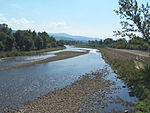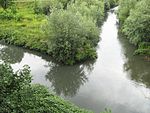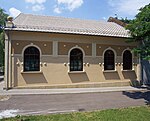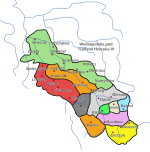Oświęcim County

Oświęcim County (Polish: powiat oświęcimski) is a unit of territorial administration and local government (powiat) in Lesser Poland Voivodeship, southern Poland. It came into being on January 1, 1999, as a result of the Polish local government reforms passed in 1998. Its administrative seat and largest town is Oświęcim, which lies 51 kilometres (32 mi) west of the regional capital Kraków. The county contains four other towns: Kęty, 17 km (11 mi) south of Oświęcim, Brzeszcze, 9 km (6 mi) south-west of Oświęcim, Chełmek, 8 km (5 mi) north of Oświęcim, and Zator, 16 km (10 mi) east of Oświęcim. The county covers an area of 406.03 square kilometres (156.8 sq mi). As of 2006, its total population is 153,390, out of which the population of Oświęcim is 40,979, that of Kęty is 19,252, that of Brzeszcze is 11,730, that of Chełmek is 9,065, that of Zator is 3,726, and the rural population is 68,638. The county contains the sites of the Auschwitz concentration camp complex (Auschwitz being the German name for Oświęcim).
Excerpt from the Wikipedia article Oświęcim County (License: CC BY-SA 3.0, Authors, Images).Oświęcim County
Spokojna, gmina Oświęcim
Geographical coordinates (GPS) Address Nearby Places Show on map
Geographical coordinates (GPS)
| Latitude | Longitude |
|---|---|
| N 50.05 ° | E 19.233333333333 ° |
Address
Spokojna 14
32-600 gmina Oświęcim
Lesser Poland Voivodeship, Poland
Open on Google Maps










